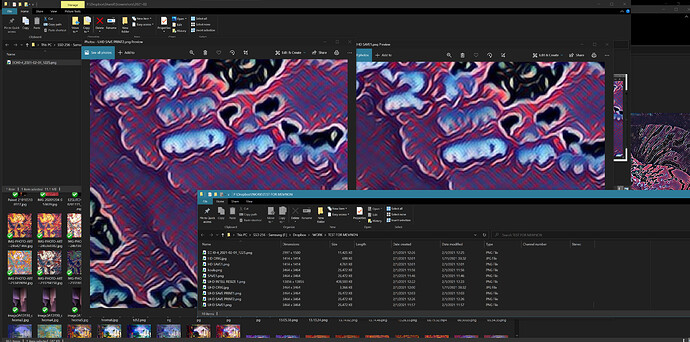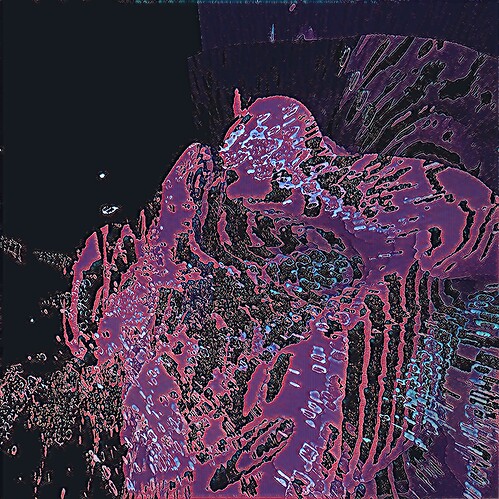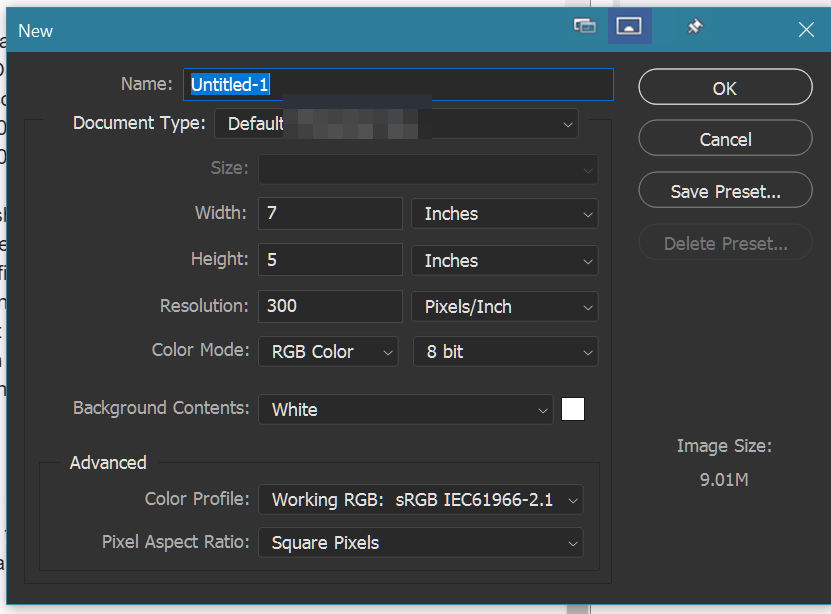Greetings!
My words are going to be in italics for clarity.
@kingofpain thank you for the detailed response. There’s nothing condescending intended, sorry if it came across that way. I personally make no distinction between a free user or a paid user, any user of Deep Art Effects should be helped as best as we can.
_Well, I would disagree with that, as you have a greater obligation to people who paid you money for your product. In addition, you charge $200 for the lifetime version of the software, and now that I’ve used some competitors software, I am angry at myself for paying that much, as there doesn’t appear to be development occurring. I thought, since this product is younger and the updates seemed regular up until this point, I could get in “on the ground level” to software that would eventually mature. _
As far as attiude is concerned, I’ve noticed the same condescension and dismissiveness and justification rather than taking accountability throughout this page. Your direct competitors are more affordable as well: Prisma, Painnt, Dynamic Auto Painter, to name a few. A couple of those are subscriptions, I know, but you also use the subscription model with a “lifetime” option. Charging a premium price for a “lifetime” option on software that is no longer in development… There are words for that, and I hope that is not what is occurring here.
Simply put, just trying to help out. Note that I am not a developer . I just reacted as you bumped up a 10 month old thread, referred to features “as seemingly broken”, where I myself and other users I am in touch with have a different experience. Hence I asked what you meant by seems broken and to ask for more details. Again, just trying to get more information so that the issues that you experience are identified and resolved if possible
Then… Respectfully, who are you? How do developers get information as to what the users desire? Or is the intention here not to provide what the users want, but something else? If so, what is it? And I’m asking that sincerely, as from what I’ve observed, you have singular user who I will not call out by name who offers more support for your “beta” GPU version, Cuda, and optimization, command line interface, and iteration than the company does! Of course maybe I’m way off base and you actually pay him/her for their services. If you do not, then you owe him a lot of thanks.
With regards to the dimensions, it’s correct that those are not currently mentioned in the software. They were in earlier versions (SD, HD, FULL HD etc.) but based on much customer feedback this has been adjusted to a quality slider with ‘maximum’ retaining the images original image.
Right I was trying to simplify things for the less tech-savvy, it seems to have backfired, as that gives an opportunity to obfuscate the actual issues. While not employed in the industry, I have an associate degree in print production here in the states, a bachelor’s in Interactive Media and currently work in User Experience/UX. The dimensions are available in the screenshot. I would think “Quality” refers to how intensive the neural network process is rather than pixel dimensions, which are obviously separate things
The size of the image unfortunately is a bad indicator of quality as we have various file types and various compression levels that affect that. Not sure what OS you’re working on, but for instance in Windows you should be able to right click the image file on your computer and see more details to see the number of pixels. For example this might be a image of 1000 px by 2000 px. When saved at Maximum setting, a normal save should retain the same amount of px, so 1000 x 2000.
Right, this information was included in the screenshot but I was not specific about it. My bad.
IMO, this is where user flow breaks down, because the Brush Size effects your final image differently depending on the starting resolution of your image file. Even Prisma, one of your direct competitors, handles this poorly, only offering “HD” and “SD”, the HD being a paid upgrade, of course. But what is interesting is while increasing the file’s pixel dimension, it doesn’t account for that by increasing the brush size. This generates wildly different results, which is fine, both can be interesting, but it’s never explained why this is happening and Prisma has no brush size adjustment. To me, SD and HD should be very similar images (except as far as pixel dimensions) with the brush size increasing along proportional with the pixel dimensions. Sometimes a MORE desirable result is achieved with LESS pixel density/resolution. Then have a much larger brush//less resolution and then “up-resolution” it, as in fig. 1:
Rather than just running the process on a much higher resolution image, as in fig. 2:
Instead of justifying why these things the way they are, why aren’t you asking how can you give the user more control over all of these variables.
When lower quality images are saved as print-file this gets up-scaled to a height of 3000 px
This means you can print it physically on a 10 inc tall image and still retain 300 pixels per inch
So this feature is intended for this, saving lower quality images, to a size suitable for physical
print.
I understand, but 10" for those who are not design majors is only 1" shorter than the long side of a piece of printer paper. To print something you could view from, say, several yards away (like a poster) you need at least 18"x24".
Note that when looking at your screenshot I see most images are already larger than 3000px, in which sense ten print file function doesn’t add anything. Which might be seen as confusing, and definitely can use some extra UI tool-tip information.
Right, as far as I could find, that information wasn’t available. But you need more than a tool-tip. You need a dialog box!
Obviously, you shouldn’t just steal someone else’s dialog box, but when exporting or saving, this is the information the user needs to make relevant choices.
If images are larger in dimension already, make a normal save with the setting set at maximum, it should keep the same number of pixels in both dimensions.
If the situation is that you want to upscale a lower quality image to above 3000px height then there’s a upscale tool under AI which up-scales the image, this can of-course affect the quality, as you would imagine when blowing up a image. However the AI function gives it a arguably better result then a normal blow up of the image would give you.
_So short answer is it’s useless if you’re already working with “high definition” files. While we’re here, my other major bone to pick is the software crashing and not telling the user, so it looks like it’s working but has in fact lost whatever you working on/rendering. Basically any other behavior (blue-screen, warning dialog box, crash-to-desktop) would be better than that. I’m being called away at the moment, but please respond if you would like more feedback on your software. If I were going to speak more it’d be about the “super-resolution” “AI-upscaling” feature, I might do some informal analysis with direct competitors’ software like Topaz Gigaresolution amongst others.
Best Regards,
King




